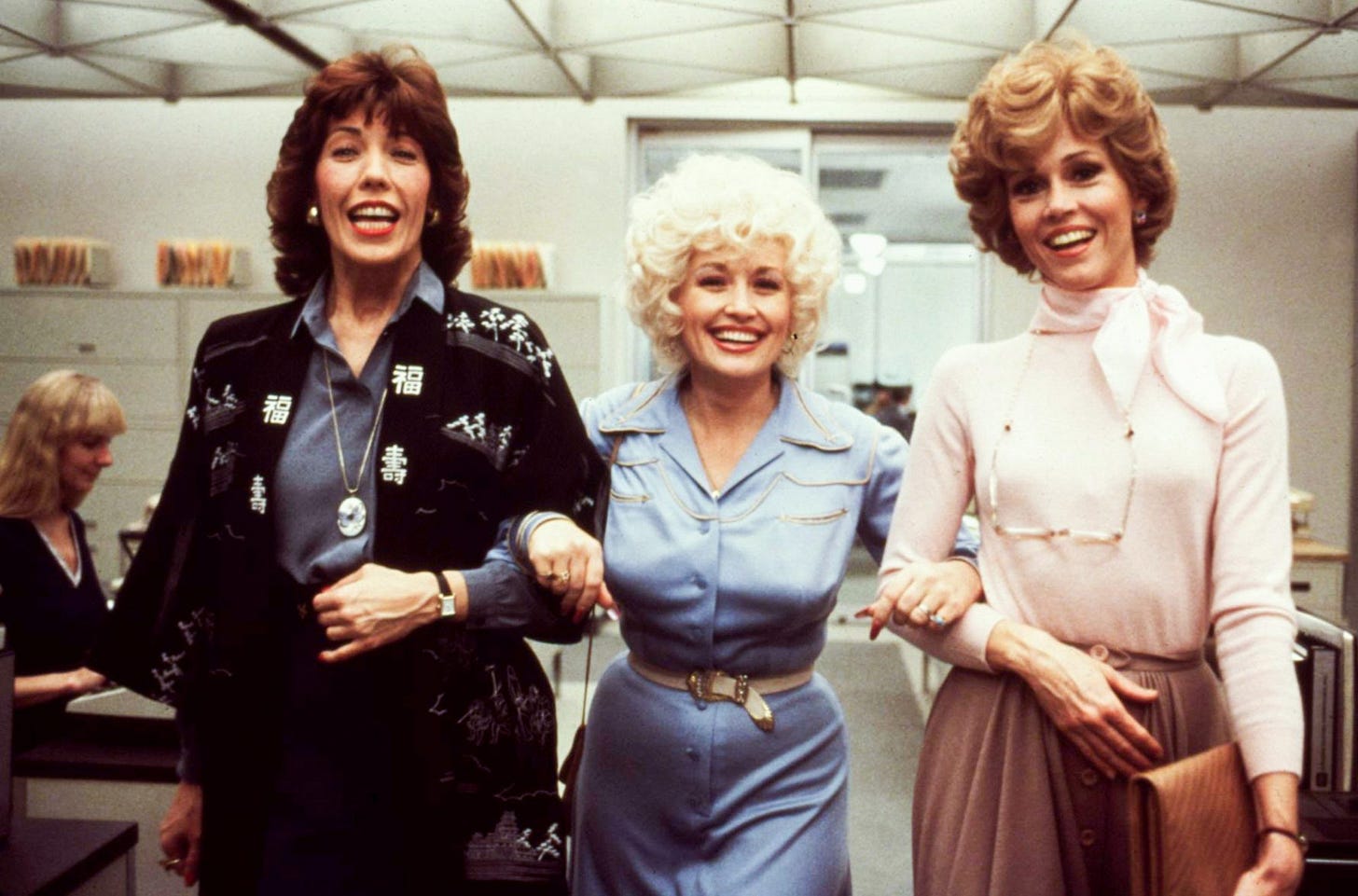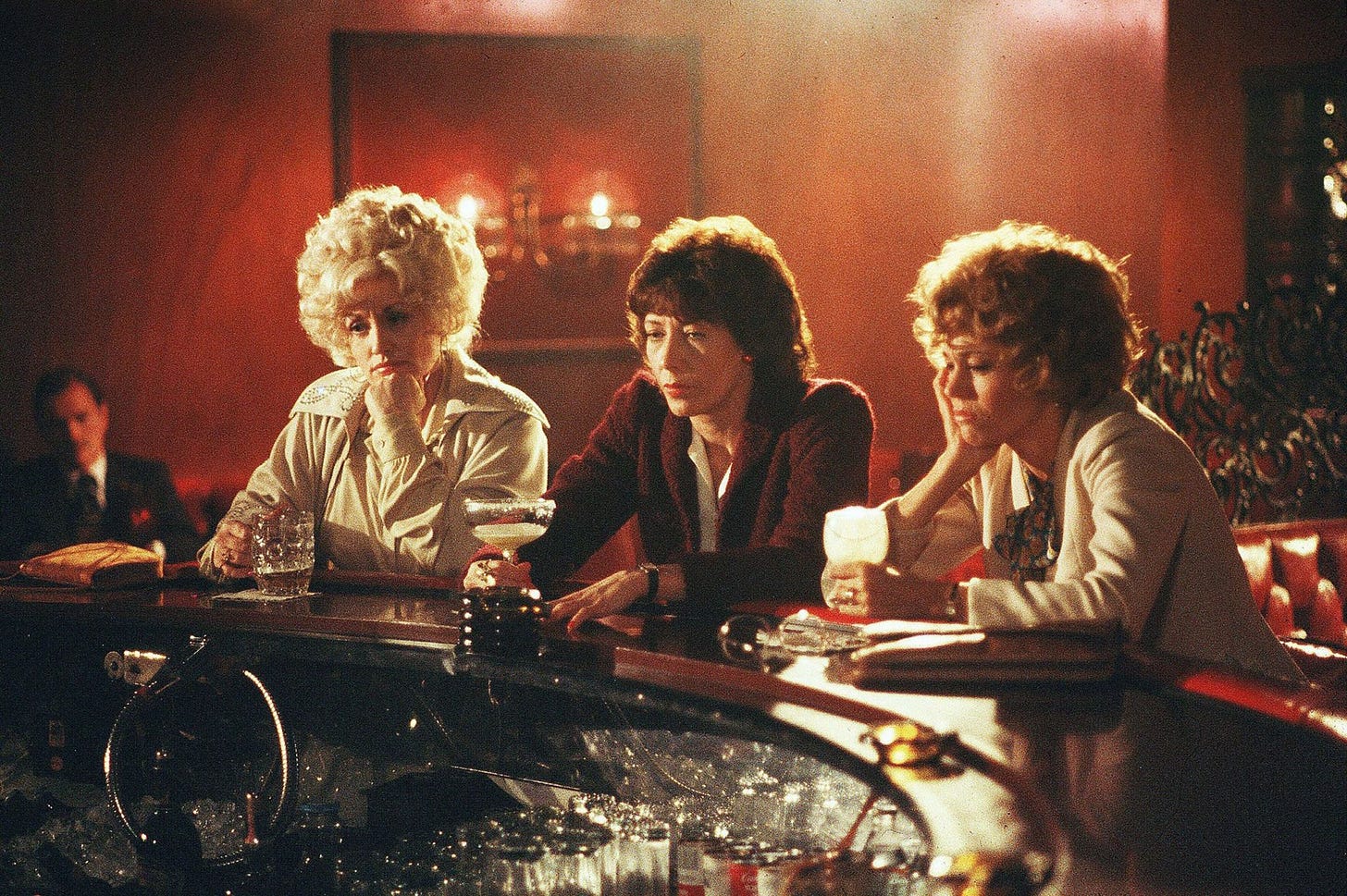9 to 5: a view of working women through a kaleidoscope - not just a camera lens
jane fonda is a national treasure. and so is dolly parton. and lily tomlin.
There’s nothing quite like the first thirty seconds of the smash hit, 9 to 5, by the illustrious Dolly Parton.

Its iconic piano refrain beckons your spine to stand up straight in tandem with the staccato clacking of a typewriter (revealed to be the sound of Parton’s acrylic nails) keeping time. An anthem for working women, 9 to 5 has become one of Parton’s most notable singles with its themes proving timeless since its debut. Released in support of the film of the same name featuring Parton, Jane Fonda, and Lily Tomlin as an unlikely band of women united against their unrelenting boss, the film has since positioned itself as an essential piece of cinema within our cultural zeitgeist and the conversations around workers’ rights. Sure, you could write this film off due to its campy dream sequences and old-fashioned gender roles, but its ability to empower a generation of women sick of being tossed aside in the workplace remains unshaken.
The camaraderie between the film’s main characters is an essential driver of the plot where Judy Bernly (played by Fonda), Violet Newstead (played by Tomlin) and the iconic Doralee Rhodes (played by none other than Dolly Parton) develop a friendship united under their mutual disgust for their boss, Franklin Hart Jr. Judy, a recent divorcee with virtually no work experience and antiquated views on womanhood, Violet, a veteran employee of Consolidated Companies - jaded due to her years of being overlooked in the workplace, and DoraLee, the effervescent bottle-blonde secretary of Hart, with initially no way to relate to each other soon realize nothing connects them more than their common powerlessness within the workplace.
What’s particularly memorable about 9 to 5 is its willingness to allow female characters to exist fully developed - we’re not provided the mistress secretary or woeful widow tropes. We see these women fend for themselves despite and against the workplace stressors they endure. Violet is given the space to complain about the disrespect she receives from Hart even with her direct involvement in his career - we learn early on in the film that Violet is the one who trained Hart as a fledgling employee and he now manages her, despite her veteran status at the company. Doralee isn’t written off as some bimbo blondie who gets taken advantage of - she defends herself against Hart’s sexual advances and obsession with her rather than being written as a woman who simply submits to the wills of her superior. We’re allowed the space to understand these women’s personal lives and the underlying motivations beneath the surface of their incredible 80’s workwear.
What I cherish most about this film is the front row seat it provides viewers to the joy of female friendships - no matter how unlikely the friendships may seem. In my favorite scene, the women gather at DoraLee’s house over drinks and some joints - and for 1980 - it places these characters completely out of their usual habitats. The ladies curse like sailors, get hammered, and fantasize about unleashing hell on their boss for hours - which sounds like my idea of a good time.
9 to 5 allows women to be viewed through a kaleidoscope lens - these characters are far more complex than meets the eye. Yes, the film is wildly hilarious and over the top, but it tackles topics like workplace harassment, adequate compensation and receiving credit for your work - all issues that plague today’s generation of working women - in a style that gives agency to those who don’t think they deserve it.
If you’re in search for the perfect movie to pair with your cozy Friday night in, look no further than 9 to 5. You’ll laugh, you’ll cry and walk straight to the nail salon for some Dolly Parton-esque acrylics ASAP.





Yes Burake! Great read :)